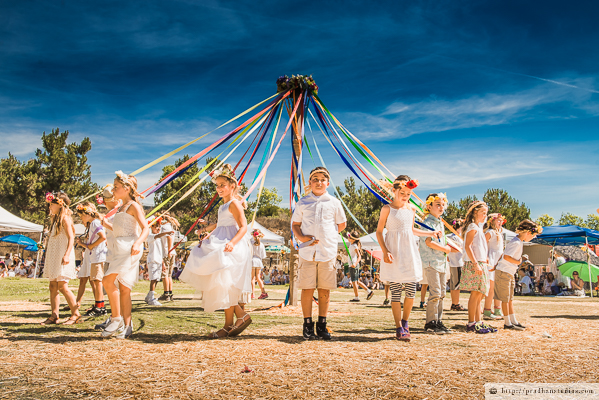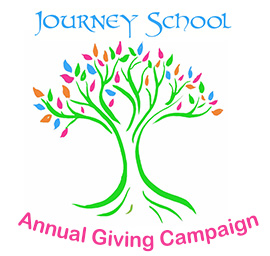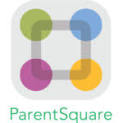In our Kindergarten the emphasis is on learning through doing, and the children are active in work and play, song and movement. Every effort is made to make our Kindergarten a warm and home-like environment for the children. Great care is given to the development and nurturing of the children’s senses, their organs for learning. All the materials are part of life and the room has a balance of color, form, simplicity and purpose. Much learning takes place, but it is through imitation and example rather than through instruction. The children are learning about life at this age rather than about the specific subjects of academic work.
The teacher plays a central role, and through her example the children enter into the life of the Kindergarten deeply. They experience the regular rhythm of each day’s activities, be they household work, arts or crafts. They are led into the yearly rhythm of the seasons with their many colors, moods and activities. The teacher introduces them to song, movement, gesture and verse in the daily activity of “circle time.” The children drink in the world of stories, both nature tales and appropriate fairy tales, which are usually told to them through the oral tradition. The children come to know and love the Kindergarten world and through it, the wider world around them.
Children come to our Kindergarten from the ages of 4-3/4 and 6-1/2. The task of the Kindergarten teachers is to provide a curriculum appropriate to this stage of child development. For more information about Kindergarten eligibility, please see our Admissions page.
Imitation
During this time in Kindergarten the children learn through imitation. The teacher sets up for herself various meaningful, practical activities – baking or cooking the week’s snack, slicing fruit, washing dishes, sewing, fixing a toy or working on seasonal crafts such as stringing corn for necklaces at Thanksgiving or planting gardens in spring. The children will watch her, and depending on their own interests, will imitate her in a variety of ways. In the play yard, a teacher picking up a broom might soon be followed by a chorus of sweepers. Perhaps a teacher sewing puppets might find herself quite literally surrounded by a group of little tailors. She supplies them with the necessary tools and soon each child will be thinking, if not shouting, “Look, I can sew!” A teacher baking a loaf of bread in the kitchen, along with her helpers, of course, might inspire another group of children to “bake” a birthday cake in their “kitchen,” imitating the teacher’s real work in their fantasy play. Most importantly it is the purposefulness and intent of the teacher in her activity that will be imitated in the purposefulness and focus of the children’s activity, related or not by subject matter. Well aware of this, Kindergarten teachers strive to perfect not only their skills, but also their appearance, speech, gestures, movements and poise.
Play
Play is the quintessential activity of children. It is the serious work of childhood. In play, children learn to experience the possibilities of life. Although play may need some guidance and teacher input, for most children play comes naturally and their swiftly growing bodies require it for healthy development. Through play, children create the world anew each day, and try on every imaginable situation within it. They build houses and ships, rockets and fire engines. They explore life in homes and farms, forests and mountains, underwater and in outer space. All of this is initiated by the children, with occasional help from the teacher. They create their play worlds using the simplest of materials, such as logs and stumps, stones and shells, cloth and play stands. In the course of play their growth in all areas is stimulated – physically, emotionally and socially, mentally and spiritually. As has been confirmed by a growing body of research, such open-ended imaginative play that comes out of the child’s inner life and capacities lays a foundation for imaginative and lively thinking in the adolescent and adult. It also stimulates an interest for all aspects of life, which can then be cultivated through academic studies in the elementary grades and beyond.
Activity/Movement
Children need to move their whole bodies! The majority of toys, and furnishings in the Kindergartens are those that encourage large scale activity and play, and the children are thus engaged for a good portion of the morning. This propensity to move is also recognized in having the children set the table and clear it, or in moving their own chairs to form the story time circle, and in the accompanying gestures for circle time songs and poems – a tree is not just a tree, it is arms outstretched above one’s head.
Capacities for Fantasy and Imagination
A child’s capacity for fantasy and imagination are intentionally encouraged and protected in our Kindergarten. This capacity is recognized, again, in the toys, where their simple forms and lack of definition allow the children’s imagination to determine the use and fill in the details. Examples are the simple doll, the large play frames, the wooden crate or the colorful cloth which can be transformed into an endless variety of structures. The child’s capacities for fantasy and imagination are also nurtured in our telling and acting out of poems, songs, stories and puppet shows. Telling a story, by heart, allows the children to create their own inner pictures, again a capacity for later creative thinking.
Rhythm
Rudolf Steiner felt that rhythm was the “carrier of life.” Children need familiarity and predictability in their lives. The yearly rhythm is created with the help of seasonal stories and crafts and the nature table, and is enhanced by the celebration of the festivals and the children’s birthdays. Great care is given to be inclusive and respectful of the various cultures and religions of the children in the kindergarten. The weekly rhythm is achieved by having a special activity each day, Monday for baking, and so on. The daily rhythm is established by following a set pattern of, for example, greeting, circle time, indoor play, clean up, snack, outdoor activities and story time, close and then lunch. The children always know what to expect, and this helps give their busy lives a sense of order and provides a secure environment in which they can develop.
Learning Readiness
In our Kindergartens, academic learning is not stressed; rather it is felt that such learning would be at the expense of the healthful unfolding of the best qualities and capacities of the child. However, learning readiness activities are, in fact, intrinsic to the curriculum. Social skills are developed through all the activities in the Kindergarten – for example, interactive play, baking bread and circle time. Fine motor skills are developed through beeswax modeling, crayoning, painting, fingerplays, lacing shoes and buttoning oneself, and cooking activities. Larger motor skills are developed through the type of indoor play that is encouraged, through various cleaning activities, and through outdoor play. Circle time, songs, nursery rhymes, puppet shows and the oral traditional of the teacher’s storytelling develop listening skills and memory, cultivating in the child a feel for language and the world of words. Along with creative play these aspects of the kindergarten life also strengthen the power of imagination. Similarly, counting games, building, and rhythmic activities build a solid foundation for numbers and spatial relationships. The animal stories and nature table, along with a general cultivation of a sense of wonder, engender in the child an unconscious appreciation for the sciences which the child will discover later. Everything presented must be true in its essence.
Reconnection
In our Kindergartens, we aim to kindle a sense of wonder, devotion and gratitude in our everyday lives. We strive to connect the child to the earth’s rhythms, beauty, and meaning, restoring an understanding and respect for all life.






